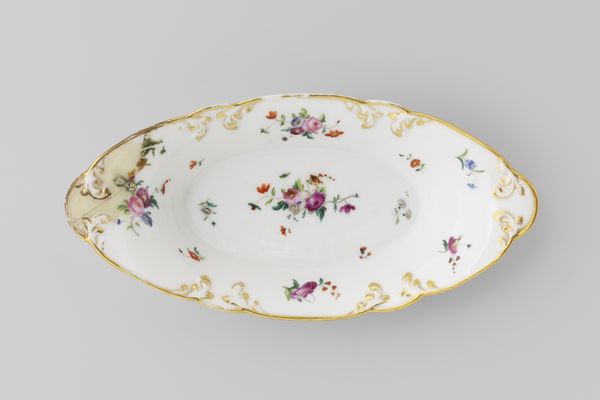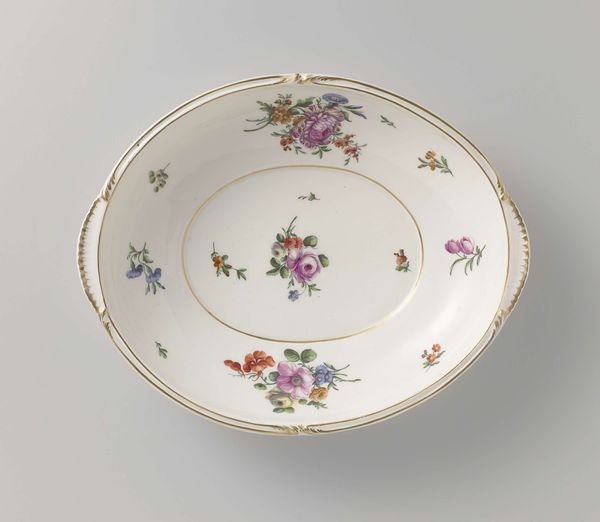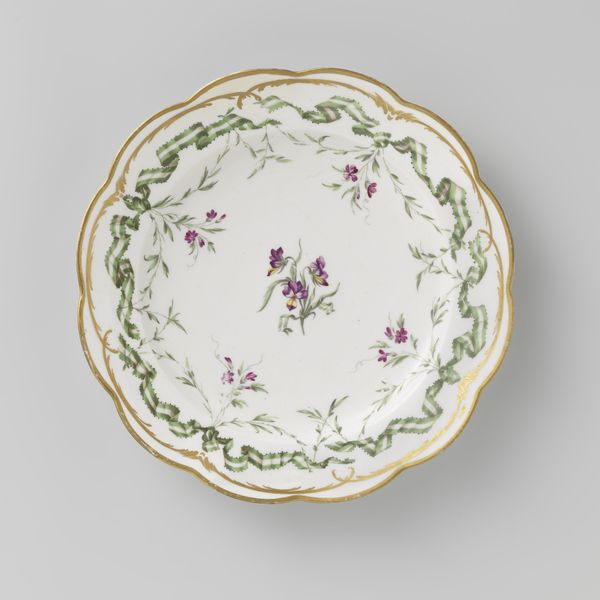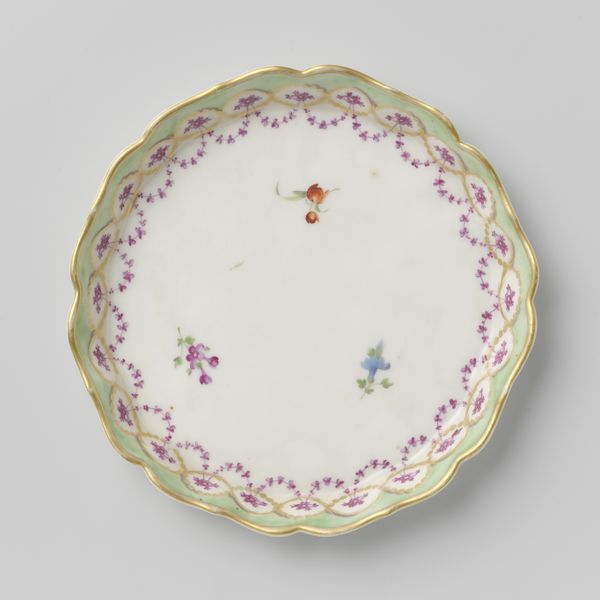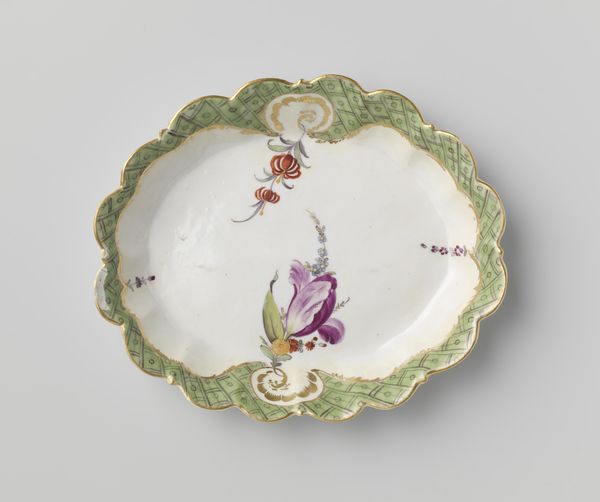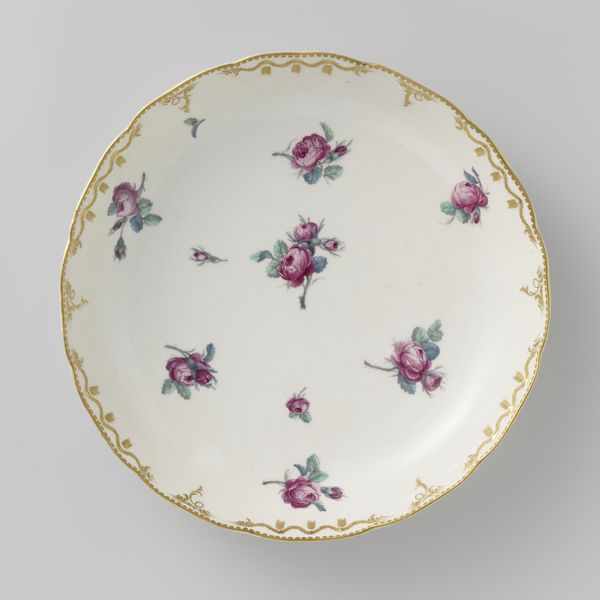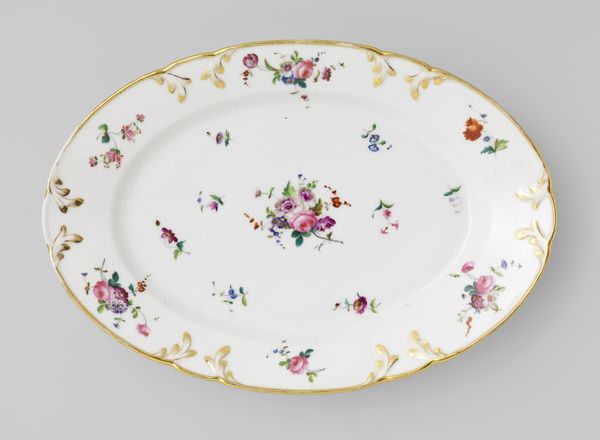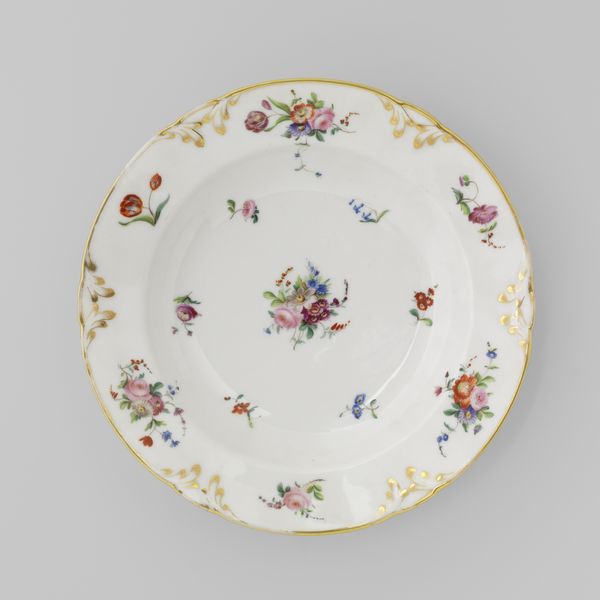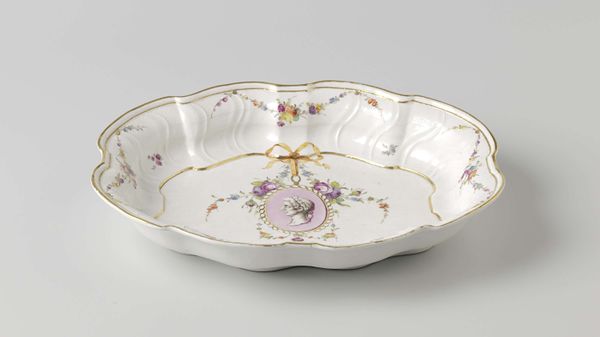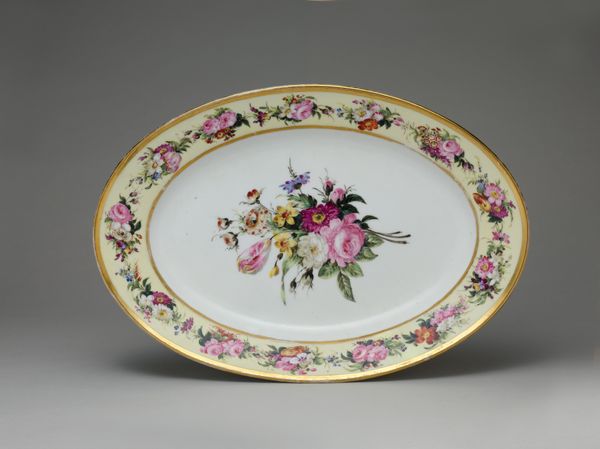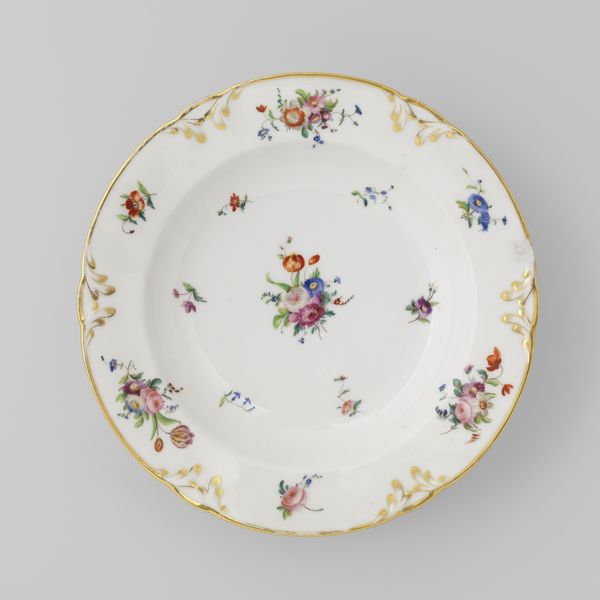
Dimensions: height 21.1 cm, width 34.9 cm, depth 4.3 cm
Copyright: Rijks Museum: Open Domain
Curator: What strikes me first is the delicacy; there's something so fragile and intentionally pretty about this piece. Editor: Indeed. Here we have a ceramic tray, specifically a porcelain 'Schaal van theeservies,' originating from Loosdrecht around 1784, now residing in the Rijksmuseum collection. It encapsulates the decorative arts and Rococo style popular at the time. Curator: Rococo! Of course. The light colors, the gentle asymmetry of the rim, those tiny, scattered floral arrangements. They seem almost carelessly placed, yet utterly charming. It’s the embodiment of a certain era of aristocratic leisure. Editor: It absolutely speaks to leisure. Yet, think about the socio-political backdrop. These refined objects emerged during a time of increasing social inequalities. Porcelain, in its preciousness, became a symbol of power and status. Each flower meticulously painted represents an element that contributes to a narrative celebrating privilege. Curator: A potent observation. Looking closer, the flowers themselves appear somewhat abstracted. While I don’t have specific flower symbolism at my fingertips, in period artwork each element carried an overtone. Can you detect a psychological intent within the arrangement of motifs? Editor: Interesting point. I'd suggest that it's precisely in their conventional beauty that their significance lies. It represents idealized nature—controlled, arranged, devoid of rawness. And there’s a connection there with women from that time: decorated, presented, confined to specific roles. The serving tray becomes more than a utilitarian object; it's a manifestation of patriarchal expectations and social hierarchies. Curator: So, what appears merely decorative carries within it both personal dreams and encoded ideologies of gender, class and control! I always find the concept of such complex ideas inhabiting simple forms incredibly interesting! Editor: Exactly. Art, even applied art, operates within a field of power. Considering this Loosdrecht porcelain tray, one encounters far more than mere prettiness—one enters an aesthetic battleground where ideals, identities, and social meanings meet. Curator: Thinking beyond its aesthetic appeal or even social context, I also like imagining hands of past times touching and using this piece. I agree; even what appear simple forms always encapsulate complex ideas and social metaphors.
Comments
No comments
Be the first to comment and join the conversation on the ultimate creative platform.
